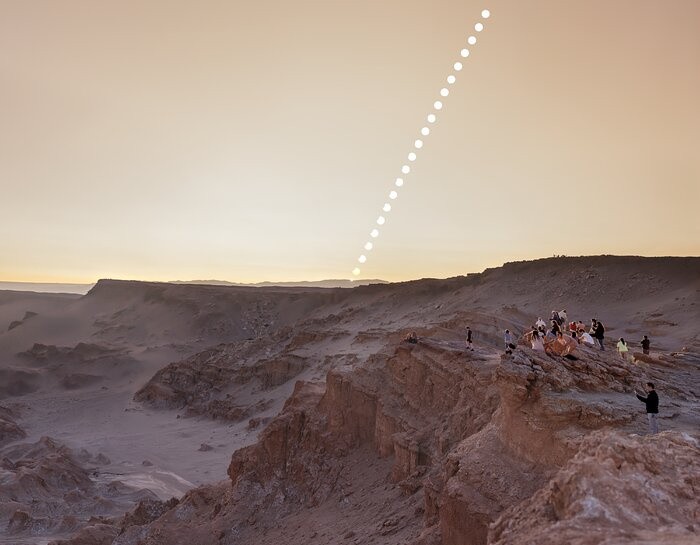Skywatchers at the Atacama Desert, Chile, gathered on April 30 to witness a sunset. However, this one was not a regular sunset, it was a rare romantic phenomenon between the Sun and Moon who graced the sky in its afterglow.

A Sunset in Moon Valley
Just before the Sun slips below the horizon, the moon entered Earth's view, kissing a tiny portion of the Sun's circle during the first partial solar eclipse this year. The European Southern Observatory (ESO) was able to capture this fascinating phenomenon through a stunning collage released on their website, last May 9.
The photograph highlights a series of images from the evening of the solar eclipse and combines them in one photo to produce a record of the moon's path at the fore of the descending Sun.
It is worth noting that a solar eclipse happens when the moon passes by in front of the Sun, as seen from Earth's vantage point. Eclipses can be neither total nor partial, the former includes the moon temporarily blocking the whole disk of the Sun.
The April eclipse features the moon blocking only a fraction of the Sun, making it look like a "bite" of the Sun had vanished. According to NASA, The fullest view of the eclipse took place at the southern tip of South America, where skywatchers were able to look at the moon blocking 64% of the Sun's disk.
The photo is strikingly made of 21 shots and the collage was also captured within an impressive 54-minute window. In the midway of that period, the moon's outline emerged and made its way to obscuring the last light of the day.
But what makes the scene even more beautiful and poetic in a sense, is that it was captured in a desert landscape. The region is known as "Valle de Luna" which means "Moon Valley" in Spanish.
Indeed, a sunset in moon valley provided a romantic tone and setting that skywatchers were able to enjoy!
Read Also : NASA Snaps Intense Solar Flare from the Sun
Volcano-tainted Sky
With the mellowly dusky sky, the eclipse's glory was revealed in such a heavenly backdrop. According to Space.com, the dusty natural effect that encircled the Sun was a result of the eruption of the Hunga Tonga Volca in the middle of the Pacific Ocean, last year in December.
The eruption blasted ash and other volcanic material, some of which still remained trapped high in the Earth's atmosphere.
Furthermore, Space.com noted that the eclipse was seen from Antarctica, the southernmost regions of South America and from the Pacific and Atlantic Oceans. But those who were not located in these regions had to view the live event through online platforms.
April's eclipse was the first solar eclipse of 2022 and skywatchers must be on the lookout since the next one will, unfortunately, be the last solar eclipse this year. On Oct. 25, a partial eclipse will be seen visibly in our skies, particularly in Europe, western Asia, and northeast Africa.
Follow Tech Times for further updates about the next eclipses and space events!
Related Article : Venus and Jupiter Will Align In A Dazzling Morning Spectacle; Find out How and When to Watch!
This article is owned by Tech Times
Written by Joaquin Victor Tacla
ⓒ 2025 TECHTIMES.com All rights reserved. Do not reproduce without permission.




